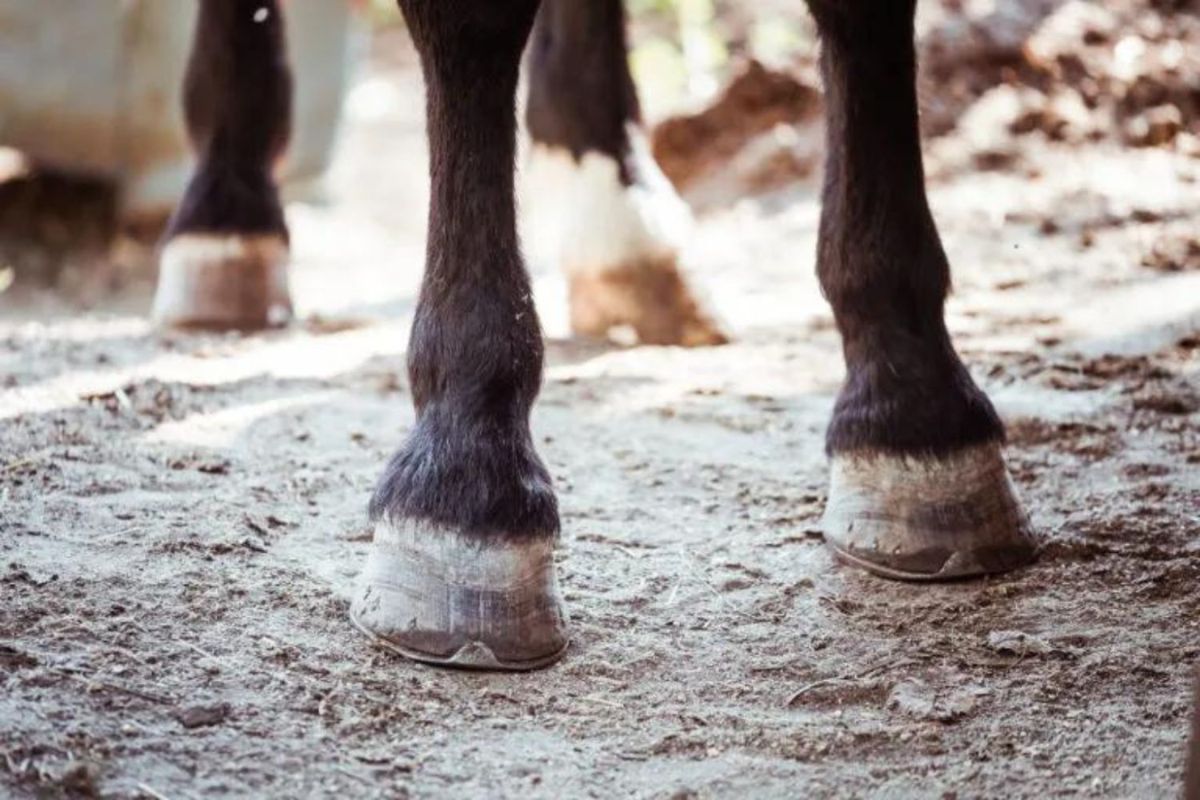Menu

In addition to ensuring that the horse gets enough water and food, goes out in the fresh air every day, and is properly vaccinated, a regular visit from the farrier is one of the most important things a horse owner should arrange. During this wet season, it's not uncommon for the farrier to give the owner this message: Your horse has thrush. In this three-part mini-series, we help you take care of your horse's hooves, focusing on how to prevent or combat thrush. It can be a bit of a struggle to get rid of, especially when the weather is as it is, and the hoof is exposed to constant moisture – but it is possible.
It's quite easy to find out if your horse has thrush – or is about to get it. Besides noticing a foul smell from the sole, you can also use your hoof pick. Carefully try to wedge the hoof pick's head down into the crevice at the top of the horse's frog. If you can get the hoof pick all the way or a good distance down, the horse likely has thrush to some extent. You can also look out for the following:
If you can answer yes to any of these questions, it's a good idea to treat the horse. The horse may have thrush in one leg without having it in the others, so it's important to check all four. If you can answer yes to any of the last three questions, you should consult your veterinarian. The horse likely has an infection caused by the same bacteria that gave it thrush. In the worst case, untreated thrush can cause the horse's hoof to narrow at the back because the horse is not stepping properly.
Once the horse has thrush, it can be difficult to get rid of, especially during this wet season. Nevertheless, something must be done. Here are some tips that should help you tackle the problem. Let's start with the most important first.
The most important thing when dealing with thrush is to create as dry and clean an environment for the hoof as possible. It's more or less impossible to avoid mud in the paddocks, and that can be a real culprit. Still, try to give the horse a chance to stand on a dry spot when it's in the paddock. If there's a shelter, make sure it's always dry and clean there. Otherwise, you can create a small "bed" in the paddock with straw or similar material for the horse to stand on. If the paddock is large, you may be lucky enough to find a mud-free area.
The same applies to your horse's stall. It should be able to stand dry when coming in from the paddock – or when going into its shelter if it lives outdoors. Remove all wet bedding and possibly add new. The base should still be dry when you come to the horse in the morning. Thrush is caused by bacteria and fungi, so it can also be beneficial to use products like Stalosan to kill bacteria living in the bedding.
Many forget to brush the area around the horse's bulbs, which can cause both thrush and mud fever. Try to make it a habit to brush the horse in that area. Always have a brush at hand when you're cleaning hooves. It makes it easier to remember.
Moreover, it's not a good idea to wash the hoof too often. It's already exposed to plenty of moisture. Even if the horse comes in with muddy legs and hooves, it may actually be best to let it dry and brush it off. The horse may not look perfectly groomed, but a dry and dirty hoof is better than a clean and damp one.
The hooves should naturally be cleaned as often as possible. Only when they are free from soil, bedding, and whatever else can accumulate, can the sole breathe and thus dry. If your horse goes barefoot, it's also a good idea to clean the white line. This is the part of the hoof wall that has a small indentation where a shoe is usually placed. Last but not least, the frog should also be cleaned. You can gently remove dirt from the crevice with a hoof pick and brush afterward with a hoof brush.
Another important factor is how often the hooves are trimmed. The farrier can both remove rotten parts of the sole and ensure that the central sulcus is opened up well, so nothing gets stuck and retains moisture.
Finally, there are all the care products you can use. Opinions are divided on what is good and what is bad for a diseased hoof. In the past, people often used tar and blue stone, but most have stopped doing that. Blue stone may be effective, but it's also harsh. Therefore, it should only be used when the horse's skin is not exposed and only once a week. Hoof tar can be good to use because it keeps environmental moisture out, but it also keeps moisture in the hoof. Therefore, today, only a few farriers recommend using tar. If you still want to use it, it should be applied to a completely dry and cleaned sole – also only once a week. Remember that the hoof cannot tolerate shampoo and detergents, so never use them. If you have to wash the hoof to get it clean, use a little soap flakes.
There is a wide range of care products for treating thrush. What works best is probably up to each individual horse owner to assess. If you don't take care of the basics, as we have suggested above, it's probably a waste of money to invest in a lot of care products. In other words, it cannot be stressed enough how important a dry and clean environment is for getting rid of thrush.